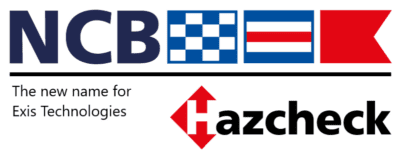Share the load – Hazardous Cargo Bulletin
The liner conference system introduces problems into the dangerous goods supply chain. James Douglas, Director of Exis Technologies, looks at an initiative to help simplify the management of booking dangerous goods between partner container lines.
As with most shipping trades, container ship operators charter space in their vessels to ‘partner’ lines. In container terms, these ‘slot charter agreements’ or ‘vessel sharing agreements’ (VSAs) enable operators to offer customers a wider delivery network than that serviced by their own vessels. Many lines have VSAs with upwards of five partner lines on some routes. The system is essential for economic slot utilisation.
For a ship operator accepting a partner line booking on his ship, the process of checks is more or less the same as with a direct customer booking. All the usual information is processed for each container or load. But it quickly gets more complicated when the containers are carrying dangerous goods (DG). Around 10 per cent of containers on deepsea container ships, upwards of a thousand containers on any of the larger container ships, contain DG. There are critical checks to be made against the particular voyage legs (voyage segments between ports) for the DG being shipped.
- Most lines restrict or prohibit certain classes of DG – particularly explosives, radioactive materials and some organic peroxides in reefer containers – so the booking line needs to know if the partner line that will carry the box or boxes will accept the DG.
- Can the vessel booked for the voyage accommodate the DG Restrictions on the stowage of many DG consignments – on deck only, away from accommodation, or away from sources of heat – mean that suitable space is finite.
- Which ports will the vessel call at? Many ports and individual container terminals have strict rules on the classes of DG that can be loaded, unloaded or transhipped; these restrictions often apply also to DG that stays on the vessel while it is in port. Lines cannot afford to have their schedules interrupted because the ‘wrong’ DG is aboard a ship.
Before it can be confirmed to the customer, each booking has to be sent to the partner line for its acceptance. The line-to-line communication is often by email and phone. Remember that the first line (taking the booking) is accepting the cargo as if carried on its own vessel, so its cannot explain any delay by saying that it is checking with another line. Multiply this process by the thousands of partner line DG bookings made each day, under time pressure, and the scale and complexity of the problem becomes clear.
Portal to partners
For some time, several major lines that use Hazcheck DG systems have been discussing an initiative with Exis Technologies that will help to simplify the management of the partner line DG booking process. The concept is simple. Exis is building an internet portal, Hazcheck Portal, into which participating lines will enter (or upload) and maintain the operator, vessel and port restrictions for their operations. Each line controls its own data and authorises password-controlled access for partner lines who can then check for DG compliance and accept a provisional booking. Lines will also be able to download the complete set of partner restrictions into their own systems and check the provisional booking there.
Participating lines will have instant access to continually updated partner line restrictions, searchable by UN Class, UN Number or Proper Shipping Name. There will be an IMDG Code lookup to check classification, packaging or other criteria. Further Hazcheck options include validation of mixed DG within the container for compliance with IMDG Code compatibility criteria and 49 CFR checks for US shipments made under IMDG Code requirements.
Captain Tey Kok Joo of NYK Line sums up the potential benefits. “Under today’s liner business pressures, in order for each line to remain competitive there are increasingly more joint services and slot swaps. In a single loop there could be a partnership that involves five or six shipping lines. And there is a tremendous amount of resource and effort required to keep track of each partner line’s DG house rules, mostly a manual process and hard copy checking. Thus a portal such as this, where one can immediately know if DG is loadable on a partner service, must surely shorten customer inquiry time and benefit all participating lines”.
The portal will interface with the lines’ systems via upload/download features and will be available as an extension of Hazcheck Gateway, the global DG web facility. Hazcheck Portal will be piloted this year with a line user group and will be rolled out progressively. Stage one will concentrate on operator restrictions only, with further stages coming online as system usage and feedback grows.







